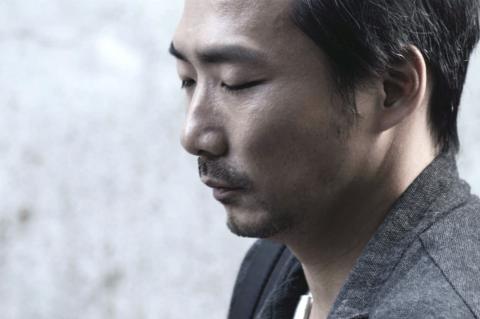From The Pain of Others (海巡尖兵, 2005) to Winds Of September (九降風, 2008), Tom Lin Shu-yu (林書宇) excels at drawing inspiration from personal experiences. With Zinnia Flower (百日告別), the director gets especially personal by using his latest film to deal with his grief over the 2012 death of his wife.
The film eschews elegiac cliches, but doesn’t evade pain and heartache. It tugs at the heartstrings with honesty, tenderness and intimacy. Karena Lam (林嘉欣) and Shih Chin-hang (石錦航), the film’s two leads, deliver heartfelt performances.
The film opens with a devastating car crash. Wei, played by Shih, loses his pregnant wife (Alice Ko, 柯佳嬿). Ming, played by Lam, loses her fiance (Umin Boya, 馬志翔).

Photo courtesy of Atom Cinema
Overwhelmed by grief, Wei drinks heavily and takes his anger out on everyone around him. The quiet and introverted Ming embarks on a trip to Okinawa that she had planned to take with her fiance, but it does nothing to alleviate her pain and emptiness.
Ming and Wei meet each other at a Buddhist ritual where the bereaved mourn the dead for 100 days. The film ends on the 100th day after the last ceremony is completed.
Zinnia Flower adresses themes oft-ignored by Taiwanese movies, which mostly stay on the light, fun and emotionally frivolous side. Yet, the story is not all tears, as the characters come to realize that they are not alone in their suffering. Lam and Shih give nuanced performances, while Shih in particular shows that he is more than the talented lead guitarist Stone (石頭) from pop-rock band Mayday (五月天).
One disappointing thing about Zinnia Flower, though, is that it is missing the sex scene between Ming’s character and her fiance’s younger brother, played by Chang Shu-hao (張書豪). The 20-second long sequence elicited much controversy when the film premiered at the Taipei Film Festival (台北電影節) in July, and was consequently cut by Lin.
Lin reportedly says the removal of the scene doesn’t affect the story, but to this reviewer, who saw the version screened at the festival, those moments of intimacy offer a deeply moving moment of despair and a desperate longing to connect.

The canonical shot of an East Asian city is a night skyline studded with towering apartment and office buildings, bright with neon and plastic signage, a landscape of energy and modernity. Another classic image is the same city seen from above, in which identical apartment towers march across the city, spilling out over nearby geography, like stylized soldiers colonizing new territory in a board game. Densely populated dynamic conurbations of money, technological innovation and convenience, it is hard to see the cities of East Asia as what they truly are: necropolises. Why is this? The East Asian development model, with

June 16 to June 22 The following flyer appeared on the streets of Hsinchu on June 12, 1895: “Taipei has already fallen to the Japanese barbarians, who have brought great misery to our land and people. We heard that the Japanese occupiers will tax our gardens, our houses, our bodies, and even our chickens, dogs, cows and pigs. They wear their hair wild, carve their teeth, tattoo their foreheads, wear strange clothes and speak a strange language. How can we be ruled by such people?” Posted by civilian militia leader Wu Tang-hsing (吳湯興), it was a call to arms to retake

Desperate dads meet in car parks to exchange packets; exhausted parents slip it into their kids’ drinks; families wait months for prescriptions buy it “off label.” But is it worth the risk? “The first time I gave him a gummy, I thought, ‘Oh my God, have I killed him?’ He just passed out in front of the TV. That never happens.” Jen remembers giving her son, David, six, melatonin to help him sleep. She got them from a friend, a pediatrician who gave them to her own child. “It was sort of hilarious. She had half a tub of gummies,

The wide-screen spectacle of Formula One gets a gleaming, rip-roaring workout in Joseph Kosinski’s F1, a fine-tuned machine of a movie that, in its most riveting racing scenes, approaches a kind of high-speed splendor. Kosinski, who last endeavored to put moviegoers in the seat of a fighter jet in Top Gun: Maverick, has moved to the open cockpits of Formula One with much the same affection, if not outright need, for speed. A lot of the same team is back. Jerry Bruckheimer produces. Ehren Kruger, a co-writer on Maverick, takes sole credit here. Hans Zimmer, a co-composer previously, supplies the thumping